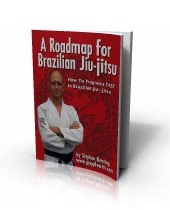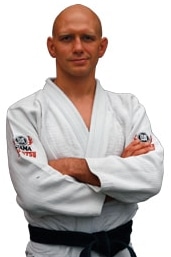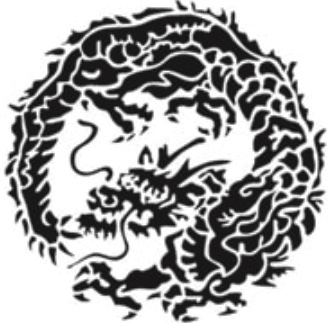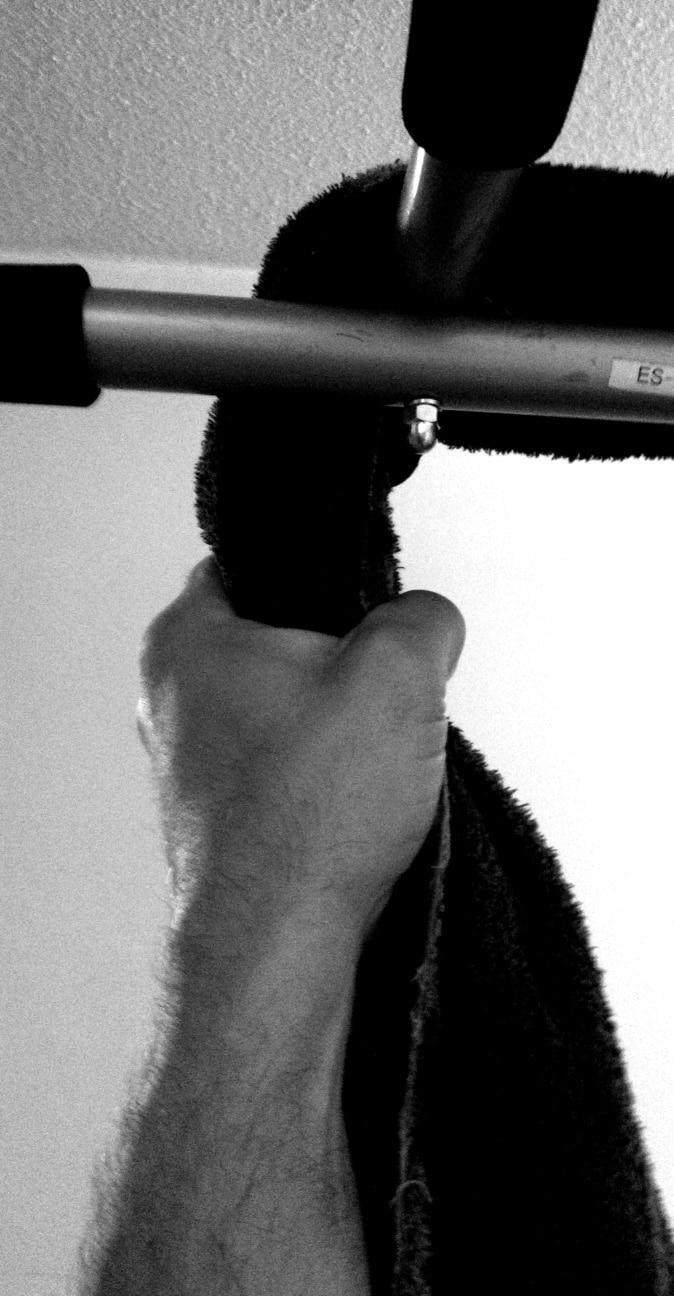
A lot of grapplers have creaky joints, and tennis elbow and golfer’s elbow are just two of the most common overtraining injuries you’re likely to encounter at the club. Here’s one grappler’s solution to his grappling-induced elbow problems.
Grapplearts guest author Tony Ricci is a grappler, a firefighter and a paramedic. I recently passed along his advice about recovering from grappling-induced foot injuries…
Tony has kindly agreed to share more of his great advice with you guys.
Before we get to his advice I want to frame the discussion by saying that you’ll come away with at least two things from this article.
Number one is learning a quick, cool, and effective exercise that we should probably all be incorporating into our training to improve our grips.
Grip strength is really important. It doesn’t matter whether you train BJJ, Judo, Sambo, submission grappling or MMA; having a better grip is a massive benefit to EVERYONE doing a grappling art.
Takehome message number two is getting inspired to keep on looking for solutions when you’re being bothered by physical ailments.
Sometimes it takes real determination and persistence to fix your broken body.
My own example of this comes from several years ago when I injured my back at work.
After getting hurt I managed to limp home, and laid down on the floor of my study to stretch. Bad mistake. I literally remained there for 24 hours because after aggravating the torn tissues with more stretching I wasn’t even able to crawl to my bedroom.
In the weeks and months after this lovely low point I tried tons of different treatments for my back. Most didn’t help at all, but eventually I found something that worked brilliantly for me (the whole story is in my Don’t Take Injuries Lying Down article).
But of course what worked for my bad back might not work for your bad back…
That’s why the important thing is to not accept chronic injuries. Don’t give up; Dylan Thomas said it best, ‘fight, fight against the dying of the light.’
Keep on experimenting until you find a way to alleviate it, work around it, or even cure it!!
Anyhow, enough about me – I only brought this up because it makes me appreciate Tony sharing his knowledge with us even more!
So without further ado, here’s one grappler’s take on how to get rid of golfer’s elbow, tennis elbow, and get a killer grip at the same time…
Tony Ricci writes:
I’ve experienced both tennis elbow and golfer’s elbow (lateral and medial epicondylitis respectively). After treating these conditions with prolotherapy, I began rooting around for the cause
….and basically no one knows for sure.
The best evidence I’ve found is anecdotal and that is the elbow, specifically the muscles around the elbow, get used with faulty patterns.
These crappy patterns can result from overly tightened forearm muscles, but even more often, the elbow is strained by a combination of bad shoulder and chest mobility leading to compensations that in turn overload the elbow–much as with the knee and bad hip and calf mobility (very few knee problems, unless direct trauma is involved) results from problems with the knees themselves.
On to what is fascinating BJJ-wise: I have always had big forearms (esp. the flexors) so I wondered why my grip in BJJ would fry so easily.
As you well know, once your grip is burned, there goes your game. Without a strong grip, all the rest of your upper body muscles become somewhat useless. I had actually begun “rationing” my forearms by applying a strong grip only a few seconds at a time so that I wouldn’t hit a point of no return (once the burn hits that’s it for the match).
Basically, my grip strength – or failure of it – became a major worry in matches.
As part of a regimen to develop my entire upper body (shoulder-girdle, arms and forearms) in a way that created better muscle balance and a better system to protect my elbows, I began doing towel pullups. Reasons for using a towel:
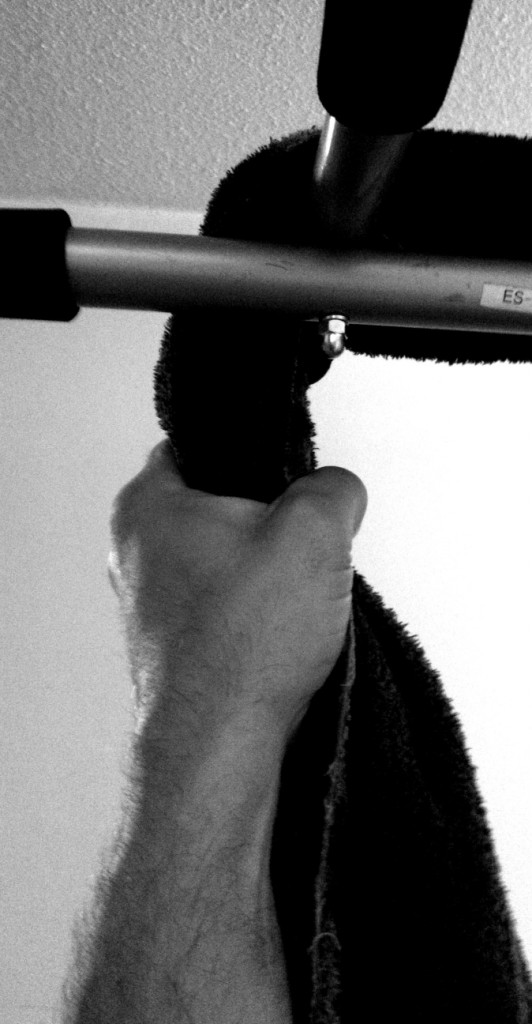 1) Active engagement of all forearm muscles–with the towel you have to actively grip the towel using all the muscles of the hands and forearms with an intense active squeeze. This is unlike a regular pullup where you’re only hooking the bar and using mainly the forearm flexors.
1) Active engagement of all forearm muscles–with the towel you have to actively grip the towel using all the muscles of the hands and forearms with an intense active squeeze. This is unlike a regular pullup where you’re only hooking the bar and using mainly the forearm flexors.
2) A common co-symptom of people with tennis or golfer’s elbow is one part of their forearm is very weak, especially the extensors. Towel pullups heavily activate all the muscles of the forearm, upper arm and shoulder girdle by a process termed as “irradiation”.
Try this simple test: make the hardest fist you can with a hand. Now, do you notice that your entire forearm is contracting? What about your biceps and triceps? What about your shoulders? Lats even? Pecs? This is an example of “irradiation.” It’s a neurologic phenomenon where, in effect, a few muscles going all out bring in their neighboring muscles for support.
At first I struggled just to hang from a pullup bar by holding onto a towel….pullups, otherwise easy for me….were out of the question because my grip would fail.
After a few weeks I was able to squeeze one (1) whole pullup. I began working that one (1) pullup in between sets of other training for a total of 5-10 pullups total. A month later I would do 2-3 pullups in a set and do five to ten sets, allowing plenty of rest between sets.
I did this training once a week (I’m 48 years old).
About six weeks after doing this I sparred with a huge blue belt, a 6’4″ Marine. Afterward he remarked on my “killer grip” and how he couldn’t get me loose.
I was intrigued and surprised… NO ONE had ever commented on my grip strength. Moreover, I hadn’t noticed that I applied any effort in gripping this guy’s Gi or anything!
A few weeks later I sparred one of my peers who usually gives me a rough time. He finished by calling my grip “Evil”.
Now I’m thinking, “Wow! Could one day of a dozen or so towel pullups be doing this?” A week later my instructor remarked on how “incredibly strong” I’d gotten. Perhaps because with a couple of fingers I clawed my way to survival by holding on to his gi pants and arms so that he couldn’t sweep or submit me?
In all the instances I never felt my arms/forearms get tired or even stressed, which is AMAZING to me!!!
And my elbows don’t bother me anymore either 🙂 And after reading Eric Cressey’s site, I also believe strongly that the towel pullups reduces the volume of pullups tremendously so that you don’t overload your torso with pullups… in short, a replacement of “quantity with quality.”
So, my recommendation: Do one to two days a week of 1-5 reps of towel pullups for five to ten sets.
You may struggle just to hang on at first, that’s okay. Once you do an easy five pullups using a towel, then try different “smoother” towels for more challenging grip development. Oh yeah, once you get this, let me know how your elbows and shoulders are doing!
Thanks,
Tony Ricci
